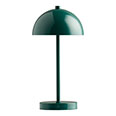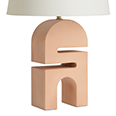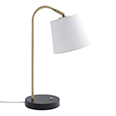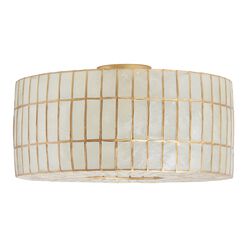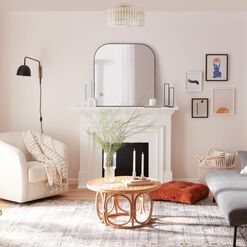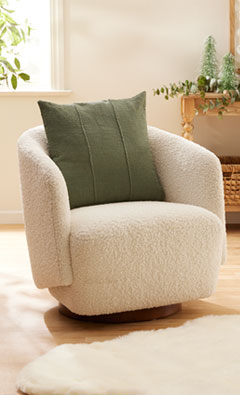Lighting for Every Room
Lighting: Types, Styles, and Uses
Lighting is an essential aspect of any home that brightens our spaces, enhances our decor and reflects our personal style. Lamps, wall sconces, hanging pendants and chandeliers all serve a simple function by providing light, but our lighting choices become more meaningful when they're used to create a mood or atmosphere. When shopping for lighting solutions it is important to consider the type of lighting, its design style and the ways you'll use it to give your home a gorgeous glow up.
Types of Lighting
One way to think about the various types of lighting available is by the strength of its illumination.
- Ambient lighting: The glowing warmth of ambient lighting provides general light for a room. We love the way ambient light fixtures create a comfortable and inviting atmosphere without a strong focus on a specific area. Examples of ambient lighting include flush-mount lights and other ceiling-mounted fixtures, multi-light chandeliers and wall sconces.
- Task lighting: A must for work-from-home offices, bedside tables, and kitchens, task lighting provides focused light for a specific purpose, such as reading, studying or computer work. Examples of task lighting include modern and contemporary lamps with pivoting necks and adjustable shades.
- Accent lighting: Drawing the eye to your decor, accent lighting is used to highlight specific features in a room, whether the unique architectural details of your living room or the abstract canvas wall art you just discovered. Examples of accent lighting include museum-style track lighting, picture lights for framed photos and wall-mounted fixtures that spotlight specific pieces of decor.
- Decorative lighting: Decorative lighting is used to add style and personality to a room and can include ambient, task and accent light fixtures that are both ornamental and useful. Chandeliers, wall sconces, table lamps and string lights are common examples.
Styles of Lighting
The style of lighting you choose can have a bold impact on the overall aesthetic of a room.
- Traditional: Traditional lighting is characterized by the classic architectural style and timeless appeal of the pre-modern era. Traditional chandeliers and lamps pay tribute to the enduring silhouettes of ages past with antique finishes, vintage-inspired silhouettes and ornate details. Traditional lighting often features decorative fixtures and warm, inviting light.
- Contemporary: Characterized by its functional modern style and sleek lines, contemporary lighting is nearly the opposite of traditional lighting. Smooth, often neutral and minimalist, contemporary lamps and pendants often feature simple fixtures and cool, white light.
- Industrial: Industrial lighting is characterized by its raw, unfinished look. The distressed, dark-hued iron lamps and pendants that celebrate this style are reminiscent of industrial-era light fixtures. This nostalgic style has a powerful aesthetic and often features exposed bulbs, cage-like contours and rugged metal fixtures.
- Eclectic: Blending design elements from all eras into entirely new creations, eclectic lighting is characterized by its inspired mix of styles and untraditional materials. It often features unexpected fixtures with contrasting textures, surprising shapes and exciting color combinations.
Uses of Lighting
Ambient, task, accent and decorative lighting can all be used for various purposes, depending on the needs of the room and your available space.
- Task lighting: Lighting can provide focused light for tasks such as reading or working at a computer. Often adjustable and designed to save space, these contemporary desk lamps, wall scones and floor lamps do a specific job so that you can do yours.
- Mood lighting: Lighting can be used to create a particular mood or atmosphere. For example, dim lighting produced with a 3-way light bulb or a dimmer switch can create a relaxing or romantic mood.
- Accent lighting: Lighting can be used to highlight specific features in a room. It's a special way to highlight wall hangings, family photographs, artwork and the distinctive architectural details of your home.
- Decorative lighting: Lighting can be used to add style and personality to a room, complementing the aesthetics of your interior decor or standing out as electric objects of art.
Lighting is an essential aspect of any home. When shopping for lighting, it is important to consider the type of lighting you need to illuminate specific areas of each room, the style of lighting that best blends with your decor and how you plan to use it. Lighting helps you focus on tasks, create the ideal mood or spotlight the key features of your indoor and outdoor spaces. Using a broad mix of lamps, pendants, chandeliers and string lights will show your home in the best light.

